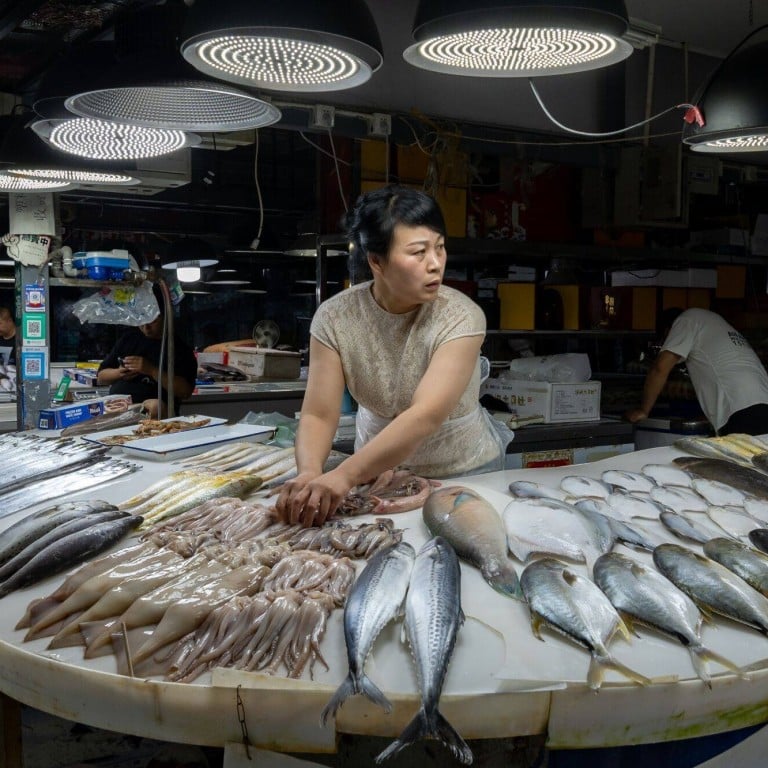
China’s small businesses bear the brunt of economic slump
- Entrepreneurs see-saw in and out of profitability as unpredictable economic changes flow downstream
- Individually run companies struggling to stay afloat despite official shows of support, prized role in spurring activity and consumption
Xu Doudou was caught between a rock and a hard place.
With less than 20 square metres (215 square feet) in a two-storey house in downtown Beijing, Xu opened a small cafe in March. She had hoped to seize the opportunity presented by the presumptive recovery of the world’s second-largest economy.
Running the cafe with the help of a few graduate students from lunch hour to after midnight was both tiring and fulfilling. But she lost confidence in late summer, after the tourism season came to an abrupt end.
“Tourists disappeared in the last week of August, so the business dropped dramatically,” she said. “It frightened me for the coming winter, which is usually the slack season for small catering businesses. People are spending less.”
She decided to close the cafe, and put up an advertisement in early September for potential tenants to take over the space.
“It is not that I’m short of funds, but I need to mitigate losses,” Xu said. “I don’t foresee business turning better over the next 12 months.”
Thanks to the unexpected slowdown, she suffered a loss of 100,000 yuan (US$13,730) – nearly one-third of her investment.
Reservations over China’s plan for private sector to kick-start economy
“Rent is the biggest burden,” she said. “I have to reach a daily turnover of above 700 yuan to break even, mainly to cover the monthly rent of 20,000 yuan. It is too hard.”
To her surprise, it was easy to find prospective subletters.
“Two people called me soon after I posted the advertisement,” Xu said. “It only took three days to sign the contract.”
Self-started businesses like Xu’s account for two-thirds of China’s total market entities and, according to the State Administration for Market Regulation, play an important role as “a reservoir for employment, stabiliser of society and new force for common prosperity”.
The administration admitted last month the operations of these businesses are facing headwinds, but pledged to step up communication and support.
That promise comes at a decisive moment. The country is confronted with a pressing need to revitalise the confidence of private business and lift the spending power of consumers, which are essential for sustained economic growth.
Gross domestic product (GDP) rose 6.3 per cent, year on year, in the second quarter largely due to a low baseline comparison with the same period in 2022, when massive lockdowns were in place to prevent the spread of the Omicron variant.
The sequential growth of a mere 0.8 per cent triggered global concerns that China’s recovery had stalled.
‘Worrying for a struggling economy’: China’s second-quarter growth fans fears
Signs of improvement came in August and September after Beijing rolled out measures to stem risks, but the market is waiting for more evidence of long-term resilience. China is set to release its third-quarter GDP and major gauges of consumption and investment on Wednesday.
According to Wind, a domestic financial data provider, an average of estimates by 18 economists projected GDP to rise 4.5 per cent from the previous year.
Retail sales, typically a reliable indicator of consumption, are expected to rise 4.9 per cent in September, up from the previous month’s increase of 4.6 per cent.
“The post-Covid recovery of consumer services will continue, but probably at a more gradual pace than many had hoped for,” said Ernan Cui, an economist with Gavekal Dragnomics. “The future trajectory of consumer spending will depend more on how the fundamentals of employment and income develop.”
When Xu started to sell her equipment and furniture online, a glimmer of hope emerged. The new tenant, a lottery operator, offered to share the space and rent.
It was a big temptation. She had not yet resigned herself to failure, so was torn between two options – continue her business at the risk of losing more, or cut her losses and stop completely.
After consulting friends and peers, she decided to keep the cafe open until the first week of October. This would coincide with the Mid-Autumn Festival and National Day holidays, a heavy tourism and consumption season known as the “golden week”.
She shifted to serving cocktails and beer in greater proportion while continuing to provide coffee, an experiment she had begun earlier.
But things didn’t work out as planned.
“The last two days of the golden week were bad,” she said. “Daily turnover was only around 200 yuan, impossible to catch up with the rent.”
Next to Xu’s cafe, a milk tea shop has also halted business as it undergoes renovations to turn itself into a barbecue restaurant – one of the only types of establishment with a steady customer base, owner Ming Chu said.
“I toured the commercial centre around Second Ring Road East last month,” Ming added. “It was a bit quiet, consumers were fewer than I estimated.”
Let’s see how the situation will play out
The number of newly registered food and beverage companies reached 363,400 in September, little changed from the 364,100 that registered in August.
It marked a rise of 9.1 per cent from the previous year but a surge of 61 per cent from 2019, according to Qichacha, an industrial data provider.
On the other hand, the number of catering companies that removed their registration – in most cases, shut down – stood at 137,500 last month, a figure that was down from the 147,000 in August but more than threefold the level in the previous year and double the pre-pandemic level in 2019.
Despite the many setbacks, Xu has not given up. She is planning to revamp her business model and renovate the building’s second-floor balcony, as the landlord has agreed not to charge rent for a year.
“Let’s see how the situation will play out,” she said.
Xu hopes to draw lessons from the past six months and explore new ways to retain clients for her future venture, but the need to be constantly multitasking remains a heavy burden.
“For a small-business owner, you have to be a ‘hexagonal warrior’: lowering costs, making good coffee and cocktails, marketing on social media, [keeping an] acute sense of social trends and [staying] flexible with market changes.”




